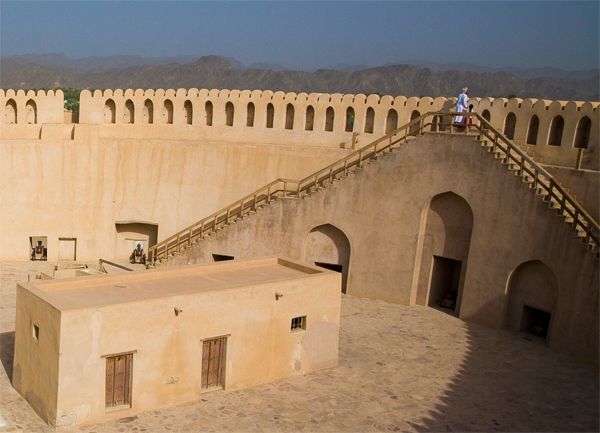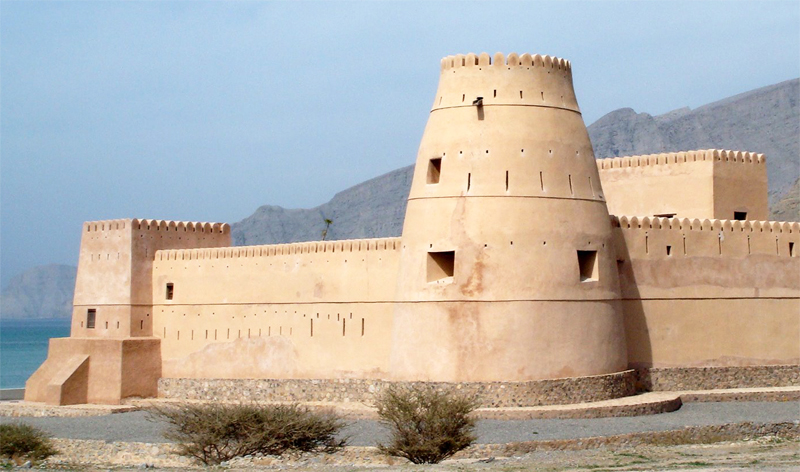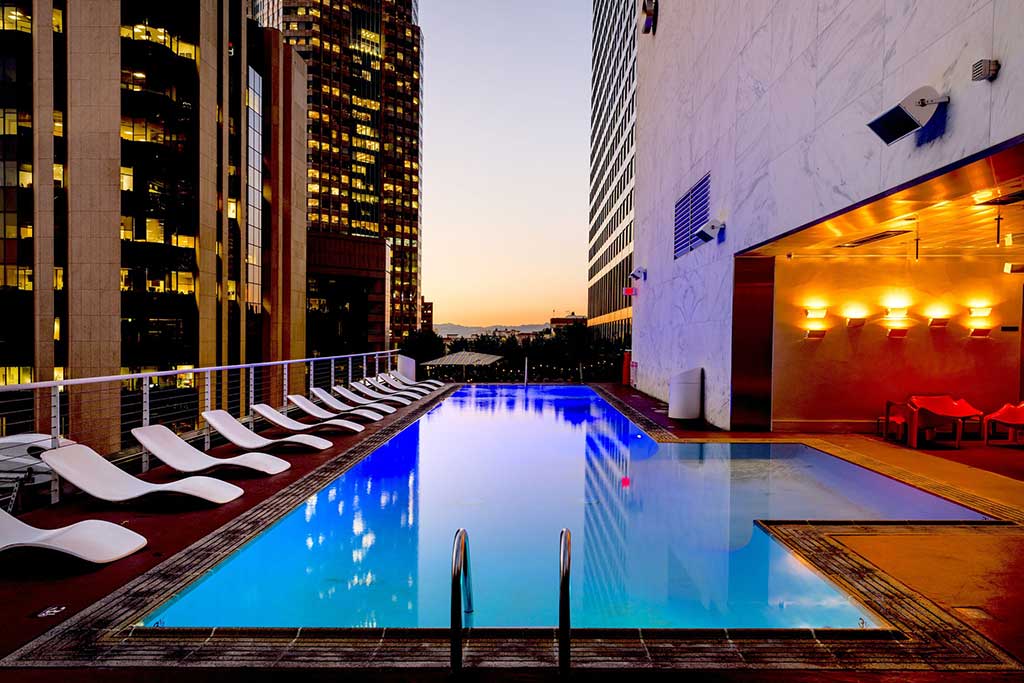Forts & Castles
Forts and Castles in Oman
Oman’s cultural heritage is evident in its 500 or more forts, castles and towers depicting its rich past.
These have also proved to be a major attraction to international tourists and efforts are being made to renovate and restore the forts and other historical monuments to their former glory.
Notable among these are the Bait Al Nad Fort, Ibri Castle, Nizwa Fort, Jabrin Fort and Bahla Fort, which has been listed as a UNESCO World Heritage Site.
Muscat, the old port area, is the site of the Sultan’s palace. Two forts, Jalali and Mirani, which were built by the Portuguese in 1587 and 1588 respectively, dramatically guard the entrance to Muscat and serve as sentinels to the Sultan’s palace. The forts were constructed on hills commanding a view of the city from the seaward side, as well as overlooking the old harbour. They were once vital points of defence for the city.
Fort Jalali, also known as the East Fort, was built to strengthen the Portuguese defences and sits on the foundations of an earlier construction. History recounts that Fort Jalali provided a safe refuge in a period of strife for Sultan Faisal bin Turki. Both forts are still used by the police and the military, and therefore are not open to visitors.

Fort Mirani – Muscat
Fort Mirani, known as the Western Fort, lies at the end of the west wall overlooking the sea. It was built as a command headquarters and straddles a rocky elevation accessible by steps carved into the mountainside.
Muttrah Fort – Muscat
Muscat’s third Portuguese fort, the Muttrah Fort, is located on a hill and was also built in the sixteenth century. To the east is a restored watchtower that overlooks Muttrah and the 100-step climb to the top is steep but well worth the effort for breathtaking views.
Sohar Fort
The Sohar Fort is a landmark with historic significance, built on a hilltop with five impressive towers. Today, it houses a museum with collections of artefacts representing different periods of Omani history.
Nakhal Fort
Suwaiq, Rustaq and Nakhal are particularly interesting for their forts, well-preserved houses and magnificent mountains. The Nakhal Fort is an exceptional example of the historical grandeur of the area and has been classified as pre-Islamic. Restoration was carried out in the 9th and 16th centuries. The fort is built over three levels, with winding routes leading from one level to another. From the summit, visitors can enjoy spectacular views of the countryside and the mountains.

Rustaq Fort
Rustaq was once the capital of Oman and is home to the Rustaq Fort, which was built four centuries prior to the dawn of Islam in Oman. It is an imposing structure built on three levels, containing separate houses, an armoury, a mosque and four towers with the tallest measuring over 18.5 metres. Hazm Fort, also in Rustaq, is an outstanding example of Omani Islamic architecture and was built in AD 1711. An outstanding feature of this fort is that the roof is built on columns, and contains no wooden supports.
Nizwa Fort
Nizwa Fort which was completed in the 1650s, is among Oman’s largest and oldest forts as well as one of the most visited national monuments. This historical edifice is an example of the ingenuity of Omani architecture. Set amid plantations of date palms, was built by Imam Sultan bin Saif Al Yaarubi. It took 12 years to build and to prevent marauders from looting Nizwa’s abundant natural wealth, as well as to protect its strategic location on the crossroads of vital caravan routes. Nizwa Fort is characterised by its height, solid fortification and unique location in the middle of Nizwa town. Its walls are rounded and robust to withstand barrages of mortar fire and feature a maze of rooms, high-ceiling walls, doorways, terraces, narrow staircases and corridors. The most striking feature of the ramparts is the central tower, soaring 35 metres above the rest of the fortification, which allows stunning views of Nizwa and the surrounding areas. Given its pivotal place in Nizwa’s history, this majestic edifice was among the first to be renovated by the Ministry of National Heritage and Culture as part of its far-reaching drive to preserve the Sultanate’s rich heritage. Used as a seat of government in its time, it is still used for meetings between the people and the Ruler’s representative each month.

Bahla Fort
Bahla is a small town situated a few kilometres from Nizwa and is shrouded in mystery and superstition. Surrounded by a 12-kilometre wall, the historic Bahla Fort with 15 gates and 132 watchtowers is one of the oldest forts in the country, with some parts dating back to the pre-Islamic period. The fort and the surrounding area is on UNESCO’s list of World Heritage Sites and has undergone major restoration.

Jabrin Fort
Jabrin Fort, which is considered one of the finest and most picturesque structures of its kind. Built in the mid-1600s the fort was not conceived as a fortification, but as a palace for the imams and is an example of Islamic architecture with wooden inscriptions and paintings on the ceiling. Consisting of three floors and 55 rooms, one of the most interesting features of Jabrin Fort is the Falaj Jabrin, the ancient system of irrigation, which flows through its ramparts
Ibri Castle
Ibri is one of the oldest inhabited areas in Oman. Ibri Castle, a remnant of the original walled city, is a robust structure built to withstand time and a harsh environment. Within its walls is the beautifully restored Friday Mosque, which continues to be used by townspeople to this day. Other important forts include the Jebel al Shahshah Fort and the Al Aswad Fort.
Buraimi Fort
Buraimi was once a quiet town bordering Al Ain in the UAE and Oman, but has now developed into a thriving industrial centre and its old fort stands witness to this change. In addition to its many forts and historic ruins including Al Araqi, Al Ghabi and Al Khandaq
Sur Forts
Sur is famous for its dhow yard where traditional fishing vessels such as dhows and sambuks are built. This is becoming a popular attraction for visitors along with the city’s two forts (Bilad and Al Sunaysilah Castle) and small Maritime Museum, which charts the history of shipbuilding in the town.
Khasab Fort – Musandam
The Khasab Fort is a picturesque stronghold situated on the inner cove of Khasab Bay in Wilayat Khasab – Musandam. The fort was built in the 17th century by Portuguese seeking dominion over regional maritime trade.
Bukha Fort – Musandam
Bukha Fort was built by the Portuguese in the 16th century and renovated in 1990.

Oman Forts and Castles Guide Map
Find forts and castles by location, check out all the featured forts and castles


















